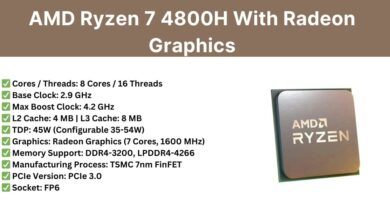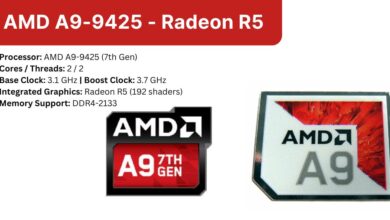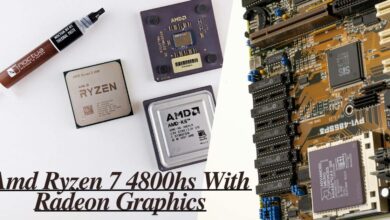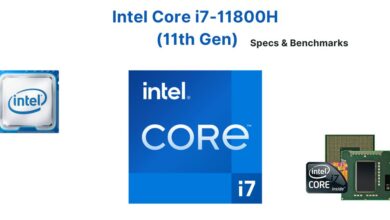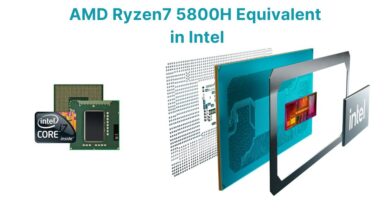AMD Ryzen 7 5800X3D AM4 – Medium Performance Processor
Ryzen processors with 3D V-Cache technology, which expands the cache memory using an additional SRAM semiconductor chip, were first mentioned by AMD exactly a year ago – at Computex 2021.
The promised Ryzen 9 5900X with 3D V-Cache technology has yet to come out, and instead, several months late, AMD released another consumer CPU with increased cache memory using this technology – the Ryzen 7 5800X3D. And, frankly speaking, it looks less impressive.
AMD Ryzen 7 5800X3D – Good Enough Or Not
Firstly, the Ryzen 7 5800X3D is just an eight-core processor, which obviously cannot be a universal flagship solution, since 12- and 16-core solutions are widely available in the desktop segment. Secondly, by the end of this year, AMD will have more advanced processors based on the Zen 4 microarchitecture, which will almost certainly eclipse the Ryzen 7 5800X3D due to an increase in IPC and support for DDR5 SDRAM.
Thirdly, thanks to the appearance of the Alder Lake family at the end of last year, the leadership in the performance of desktop processors passed to Intel. Since Alder Lake offers higher specific performance than Zen 3, the Ryzen 7 5800X3D is now forced to solve a completely different problem: it does not set new performance records in games, but only tries to overtake competitor processors by an extensive method – due to a multiple increase cache memory size.
In other words, in the end, the release of the Ryzen 7 5800X3D turned out to be quite watered down, and it seems that AMD lost a lot because it missed the deadline and made a completely different model than it promised. However, that doesn’t stop her from calling the Ryzen 7 5800X3D “the world’s fastest gaming processor.”
However, there is a feeling that AMD is overestimating the capabilities of its product: at least, many independent reviews could not confirm that AMD was right in assessing the performance of the new product. And for this reason, we decided to test the Ryzen 7 5800X3D ourselves. Moreover, this is not just a unique AMD processor in its design, but also a kind of final feature in the history of the Socket AM4 ecosystem: its development on the Ryzen 7 5800X3D completely stops, and no other CPU models will be released for this processor socket.
Also, Check AMD Ryzen 7 7800X3D
General Specifications
Graphics
- Availability Of Integrated Graphics: No
Frequency
- Base frequency: 3.4 GHz
- Turbo frequency: 4.5 GHz
Product Features
- Processor line: Ryzen 7
- CPU socket: AM4
- Processor brand: AMD
- Processor configuration: OEM (without cooler)
Kernel And Architecture
- Architecture: Zen 3
- Number of Cores: 8
- Number of threads: 16
- L3 cache: 96 MB
- Technical process: 7 nm
- L1 cache: 512 KB
- L2 cache: 4000 KB
Thermal characteristics
- Heat dissipation: 105 W
- Maximum processor operating temperature: 90 C
RAM
- Memory type: DDR4
- Max. amount of RAM: 128 GB
- Max. RAM frequency: 3200 MHz
Additional
- Type: CPU
- Brand: AMD
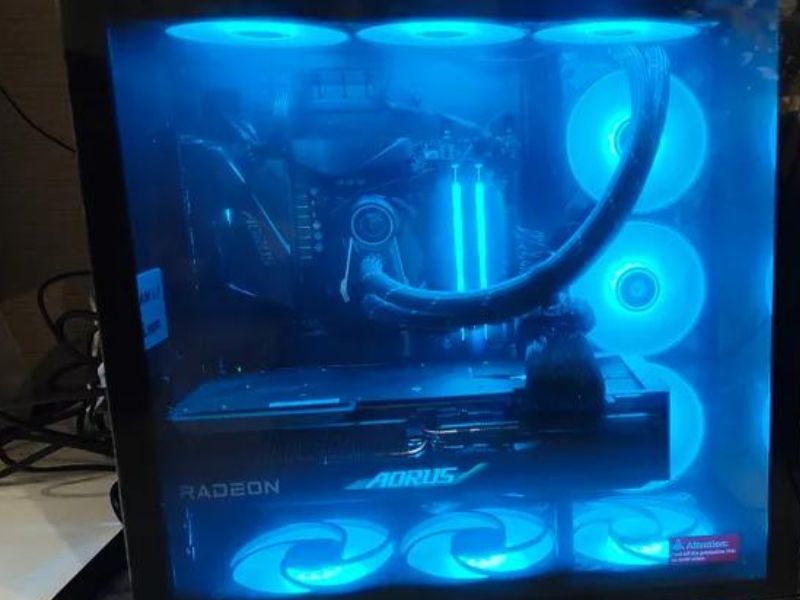
Application Performance Of AMD Ryzen 5800X3D
Performance in resource-intensive tasks associated with creating and processing content depends much more heavily on the number of processing cores and processor clock speed than on the amount of its cache memory, at least when it comes to Zen 3 microarchitecture media. As a result, in most cases, Ryzen 7 The 5800X3D does not demonstrate a noticeable difference in performance from a regular eight-core processor with a 32 MB L3 cache.
However, among the applications, some actively work with streaming data where the positive effect of the 96 MB L3 cache is still visible. For example, when archiving, image pipeline processing in Lightroom, code compilation in Visual Studio, and technical calculations in Matlab, the 3D cache-enhanced Ryzen 7 5800X3D outperforms the Ryzen 7 5800X, despite the lower clock speed. But even in such tasks, the advantage of the new processor cannot be called significant, and it does not give it a chance to overtake CPU models with a large number of processing cores.
Ryzen 7 5800X3D Gaming Performance At 1080p Resolution
This section is the central part of all testing. It’s the gaming performance of the Ryzen 7 5800X3D that AMD is focusing on, claiming that tripling the L3 cache can add 15% to gaming performance. True, this value was obtained by the company based on the results of its testing in six specially selected games, and therefore may not describe the situation as a whole.
Indeed, our independent testing of 12 games does not match AMD’s estimate. According to our data, the average advantage of the Ryzen 7 5800X3D over the Ryzen 7 5800X in the average frame rate in Full HD resolution is only 11%, but at the same time, from the point of view of minimum FPS, the new eight-core processor with 3D cache is much more productive than the old one – by 16%.
Be that as it may, AMD is right that 3D V-Cache technology is of interest mainly to gamers. With the Ryzen 7 5800X3D being the Socket AM4 processor with the largest cache memory, it’s easily AMD’s best current solution for gaming builds. Not only the Ryzen 7 5800X but also the multi-core Ryzen 9 5900X and Ryzen 9 5950X cannot compete with it: the new product outperforms all of them by approximately the same amount.
However, AMD’s claim that the Ryzen 7 5800X3D is the fastest gaming CPU is not confirmed in gaming tests. If we talk about average FPS, then it falls short of the performance of the Core i9-12900K by about 1.5%, and this can still be called a slight lag. In terms of the minimum frame rate, the gap is more serious – in this case, the Intel flagship provides a 7% better result. In addition, the Ryzen 7 5800X3D does not even outperform the lower-class Intel processor – Core i7-12700K. That is, from the point of view of the minimum frame rate, not only the flagship 16-core Alder Lake, but also the model with 12 cores looks preferable to the new AMD product with 3D cache.
Performance in comprehensive benchmarks
The results in the PCMark 10 test, which measures performance in typical common work scenarios, do not inspire much optimism. In any of the three types of load – office, Internet activity, and when working with content – the Ryzen 7 5800X3D is slower than its “regular” brother, the Ryzen 7 5800X. That is, the test indicates that increasing the amount of cache memory cannot be a universal recipe for increasing performance. For average applications, 32 MB of L3 cache is quite enough, and its further increase at the expense of the clock frequency does not lead to anything good. For this reason, the Ryzen 7 5800X3D is in last place on the charts in any scenario from PCMark 10 – there is no need to say that the new processor is capable of competing with the Ryzen 9 5900X or Core i7-12700K.
However, you should not take the result in the 3DMark CPU Profile as a harbinger of failure of the Ryzen 7 5800X3D in games. This test addresses only one aspect of gaming performance and bypasses the work that falls on the processor when exchanging texture and graphics information with the video card, where a huge L3 cache can play a positive role.
3D V-Cache Technology In Detail
AMD did not come out of nowhere with the idea of increasing cache memory capacity to improve performance. Moving large amounts of data closer to the processor cores, which dramatically increases the speed of accessing them, is a fairly simple technique that AMD liked before. AMD processors have long been distinguished by the amount of cache memory, and the company’s marketing department uses the name Game Cache for it, directly indicating that a capacious L3 cache is extremely useful for games. The opposite is also true: Ryzen processors with reduced cache, such as the Ryzen 5 5500, have rather modest gaming performance.
The Ryzen 7 5800X3D is a processor where the idea of increasing cache capacity in the name of maximum FPS is taken to the absolute: it has 96 MB of L3 for eight cores (12 MB for each core). But its main feature is not even the impressive size of the cache, but the design, which is figuratively described in the processor model number with the ending “3D”. It means that the Ryzen 7 5800X3D cache is expanded with an additional 3D V-Cache crystal, which is physically superimposed on the original processor chip from above – in the third dimension. In other words, it sounds quite simple: an additional 64 MB SRAM memory chip is mounted above the 32 MB L3 cache in the processor chip and combined with it through end-to-end connections. But in reality, everything is much more complicated.
Power Consumption and Temperatures
Heat dissipation seems to have become the most pressing issue for AMD when preparing the Ryzen 7 5800X3D for release. But the point is not in the additional heat generation of the 3D cache crystal (on the contrary, it makes virtually no contribution to the heating of the CPU), but in the fact that the two-level layout makes it difficult to remove heat from the lower “floor”, where the hot CCD crystal with computing cores. It is for this reason that the Ryzen 7 5800X3D has limited clock speeds, but this is far from the only measure that AMD had to take.
So, in the Ryzen 7 5800X3D, the company used a new B2 stepping crystal instead of B0, which we are used to seeing in regular Ryzen 7 5800X. The updated silicon has no differences in capabilities or performance but has lower leakage currents, which makes it possible to use it at lower voltages. While the operating voltage range of our Ryzen 7 5800X sample extended depending on the load from 1.0 to 1.462 V, the Ryzen 7 5800X3D on the B2 stepping was content with voltages in the range from 0.95 to 1.281 V. And therefore, the Ryzen 7 5800X3D should be noticeably more economical.
Verdict
From a technology point of view, the Ryzen 7 5800X3D is a very interesting product, and getting to know the device is truly admirable. AMD has come up with and executed a great plan to breathe new life into the 2020 processor. Moreover, it is implemented using the most advanced approaches to the layout of crystals – by scaling the proprietary chipset design in the third dimension. And even though the additional chipset with which AMD improved the old Ryzen 7 5800X is just an SRAM memory crystal that increases the L3 cache, this does not change the essence. We’ve never seen anything like it before, and the Ryzen 7 5800X3D is the first mainstream consumer processor to use 3D editing technology.
However, technological innovation is not enough to make the Ryzen 7 5800X3D a comprehensively attractive product, and its consumer qualities do not cause great delight at all. First, this eight-core processor is quite expensive – AMD is currently selling the Ryzen 7 5800X3D for $449, which is even more expensive than the Ryzen 9 5900X. Secondly, the new eight-core processor cannot be called universal: an increased L3 cache is combined with lower clock speeds, which makes it poorly suited for many workloads. Thirdly, even in games where the Ryzen 7 5800X3D demonstrates a really serious advantage over its counterparts without a 3D cache, it is still not the most productive option compared to representatives of the Alder Lake family. Moreover, not only the flagship Core i9-12900K can offer a higher level of FPS, but also the more affordable Core i7-12700K, which costs less than the Ryzen 7 5800X3D.
Source: AMD
